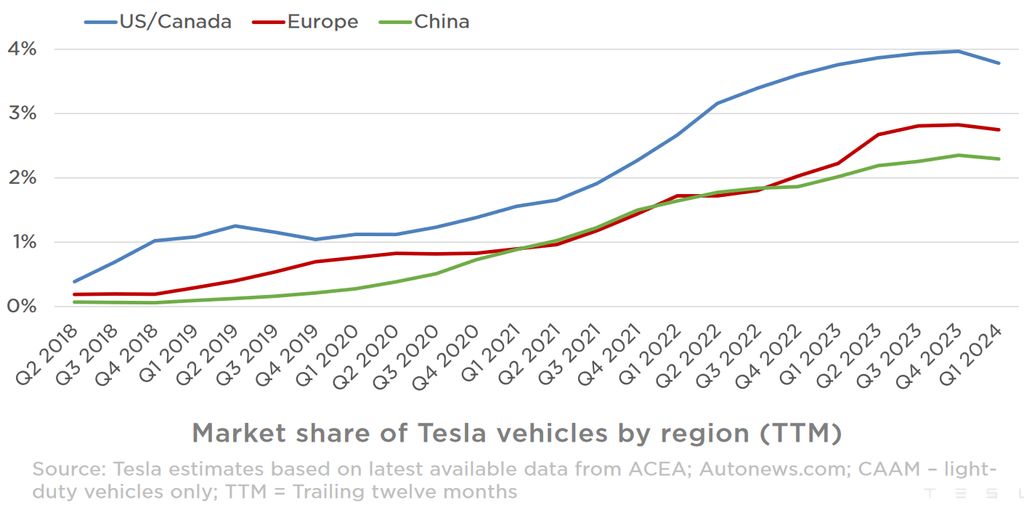The weakening of Tesla EV deliveries during the first quarter of 2024 undermined the company’s global market share.
According to the industry data (trailing by twelve months), highlighted by Tesla in its Q1 financial report, the brand’s market share in the United States/Canada (counted together) slightly decreased from a peak of 4% at the end of 2023. We can estimate from the graph that the current number is closer to 3.8%.
Tesla EV sales growth slows down
In 2023, Tesla delivered a record number of over 1.8 million electric cars (38% more than in 2022). In Q1 2024, the company delivered 386,810 EVs, 9% less than a year ago.
Tesla was unable to maintain its market share in Europe too, although the decrease appears to be very small. Some might even say that the situation is stable, at about 2.8% share or so.
The third most important market for Tesla—China—noted a small decline in Tesla’s market share. It seems to be at around 2.3% or so.
The most recent decrease in market share (over 12 months) indicates that Tesla is encountering challenges. The volume is not growing, despite applying new waves of price cuts.
Dips in market share were recorded in the past so maybe things will improve later in 2024 or in 2025.
Tesla repeated its previous explanation: “Our company is currently between two major growth waves: the first one began with the global expansion of the Model 3/Y platform and we believe the next one will be initiated by advances in autonomy and introduction of new products, including those built on our next generation vehicle platform. In 2024, our vehicle volume growth rate may be notably lower than the growth rate achieved in 2023, as our teams work on the launch of the next generation vehicle and other products.”
One of the most interesting things is that Tesla has decided to update its future vehicle line-up and “accelerate the launch of new models ahead of our previously communicated start of production in the second half of 2025.”
There will be new Tesla electric vehicles, including more affordable models, partially based on the next-generation platform and partially based on the current platforms. The new EVs will also be produced on the same manufacturing lines, although at a higher volume. The company mentions a potential of three million units annually, compared to less than 2 million currently.
Since 2008, Tesla cumulatively produced more than six million electric cars globally.


